
Roots
The whisper of a strand, often unseen, carries a weight of knowing. For those whose hair defies a single, smooth cascade, whose coils and kinks dance with a mind all their own, there exists a profound connection to generations past. It is a connection not merely aesthetic, but one deeply etched in the very architecture of our hair, a biological testament to journeys spanning continents and centuries.
This textured crown, a living archive, beckons us to consider a timeless question ❉ Can ancient botanical knowledge truly guide the future of hair care innovation? To answer this, we must first listen to the echoes from the source, the earliest understanding of the strand, intertwined with the wisdom of the earth.
Consider the subtle helix, the very shape of textured hair, which sets it apart from straight hair. This structure, whether a gentle wave or a tight curl, creates specific needs for moisture retention, strength, and protection. Our ancestors, lacking electron microscopes, possessed an intuitive, profound understanding of these needs, passed down through observation and sustained interaction with the natural world. Their botanical insights were not happenstance; they grew from generations of living in close concert with the earth.
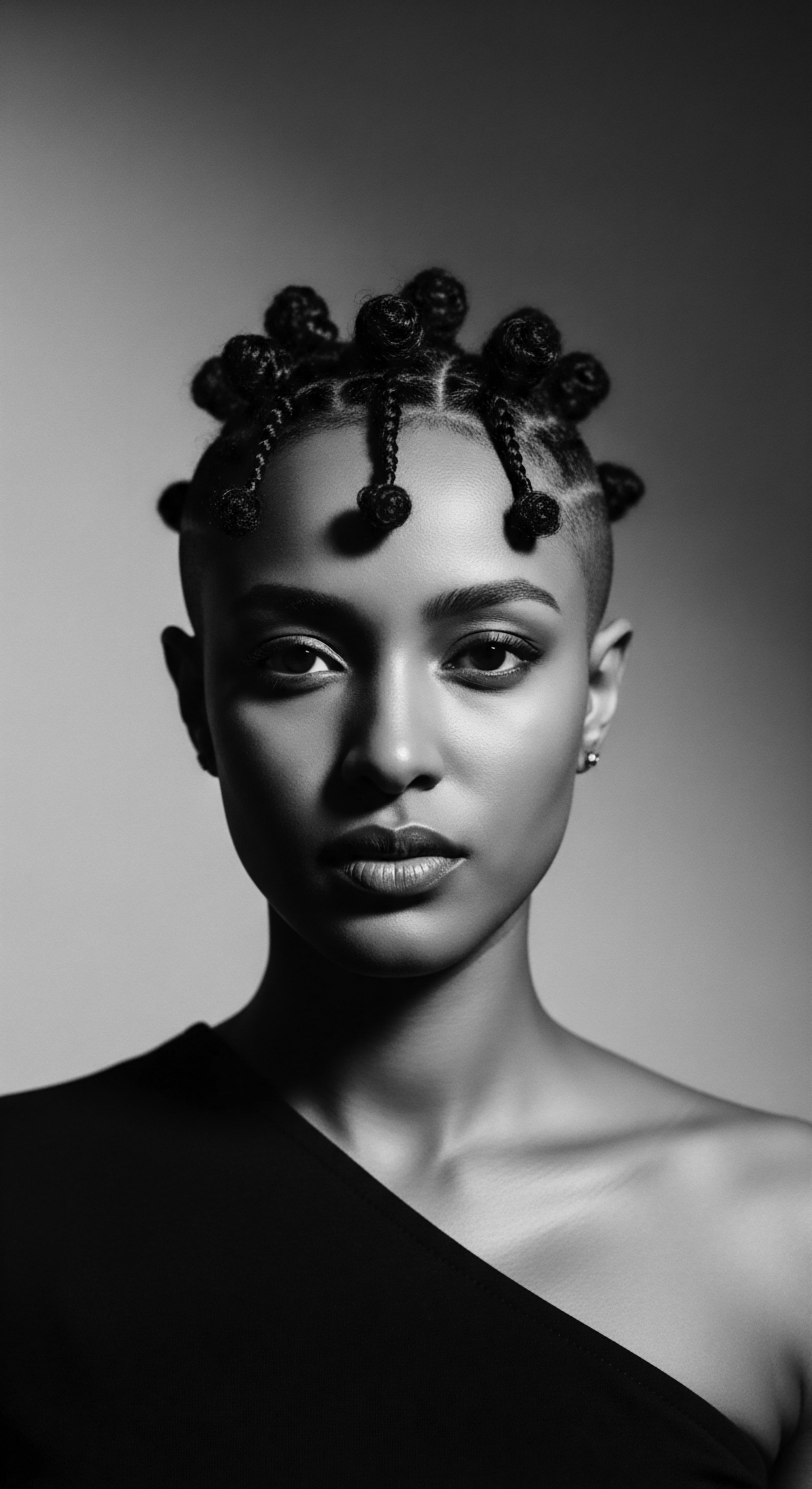
Anatomy of a Textured Strand
The structural biology of textured hair, with its elliptical follicle shape and varied curl patterns, results in more cuticle lifts and twists along the hair shaft. This inherent architecture, though beautiful, also means that natural oils produced by the scalp travel less efficiently down the hair strand, leading to a tendency toward dryness. Understanding this inherent thirst, communities across ancient Africa and beyond turned to botanical allies. Their methods for cleansing, conditioning, and protecting hair were not simply empirical; they arose from a deep, communal knowledge of the plant kingdom.
From the Saharan sands to the verdant rainforests, distinct approaches to hair health emerged, each informed by regional flora. These varied practices, woven into the fabric of daily life, formed the earliest pharmacopoeia for textured hair. Modern science now often provides the molecular explanations for what ancestors knew through intimate experience and consistent application.

Ancient Classifications and Lexicon
Though formal scientific classification systems for textured hair are modern constructs, ancestral communities possessed their own nuanced ways of describing and understanding hair types. These were often tied to social status, ceremonial roles, and familial lineage. The language used to speak of hair was rich with descriptive terms, reflecting its central place in identity.
For instance, the varied patterns of braids across African communities served as a complex system of nonverbal communication, identifying one’s age, tribal affiliation, marital status, or social standing. This living heritage of hair practices allowed for a detailed understanding of different hair forms within a community. It was not a standardized numerical system, but rather a fluid, culturally embedded lexicon that informed care. The understanding of specific plant benefits was integrated into this living language of hair.
Ancient botanical practices were not accidental applications; they represented deep, generations-old understandings of textured hair’s unique structure and needs.
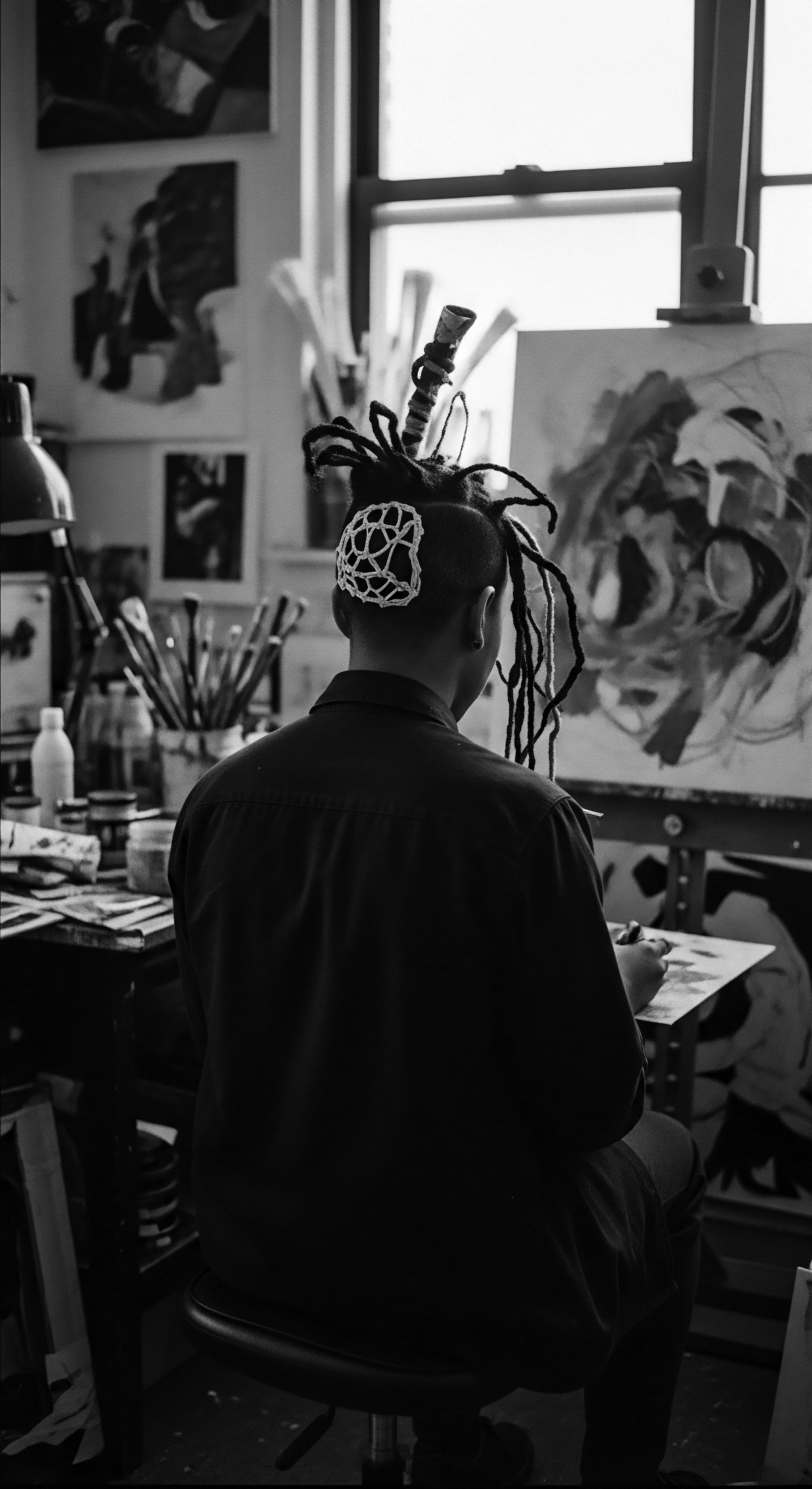
Botanical Beginnings for Hair Growth and Health
Early civilizations intuitively recognized that healthy hair growth stemmed from a nourished scalp and fortified strands. The plant kingdom provided the earliest remedies. In ancient Egypt, for instance, women and men used fenugreek and aloe vera to achieve shiny, thick hair, with aloe being highly valued for hydration.
They applied castor oil , honey , and even beeswax for nourishment and protection, long before commercial products existed. These ingredients were not just for appearance; they addressed fundamental aspects of scalp health and hair integrity.
Across the continent, in West Africa, the shea tree (Vitellaria paradoxa) offered its revered butter, used for thousands of years as a multi-purpose balm. This rich, creamy substance, extracted from shea nuts, is abundant in vitamins A, E, D, and F, alongside essential fatty acids. It deeply moisturizes and protects textured hair, preventing dryness and breakage, and soothing the scalp. The consistency of its traditional use highlights a knowledge system built on direct observation of efficacy.
Further south, the marula tree (Sclerocarya birrea) provided another precious oil. Revered as the “marriage tree” in Zulu culture, marula oil has a history spanning nearly 10,000 years in African communities. It was used to shield skin and hair from harsh elements, a testimony to its protective and nourishing properties. These indigenous applications suggest an advanced understanding of environmental impact on hair health, mitigated through botanical remedies.
This foundational understanding, gleaned from consistent observation and intergenerational transfer, provides a compelling argument for revisiting botanical traditions. The enduring presence of these ingredients in contemporary hair care, now often validated by scientific inquiry, underscores the wisdom held within these ancient practices.

Ritual
The act of caring for textured hair has always transcended mere grooming; it is a ritual, a tender thread connecting generations through shared practices and stories. This section explores how ancient botanical knowledge has shaped, and continues to shape, the art and science of textured hair styling, encompassing techniques, the tools used, and the transformations achieved. The emphasis here is on the living traditions, the hands that passed down the touch, and the botanicals that became allies in these intimate moments of care.
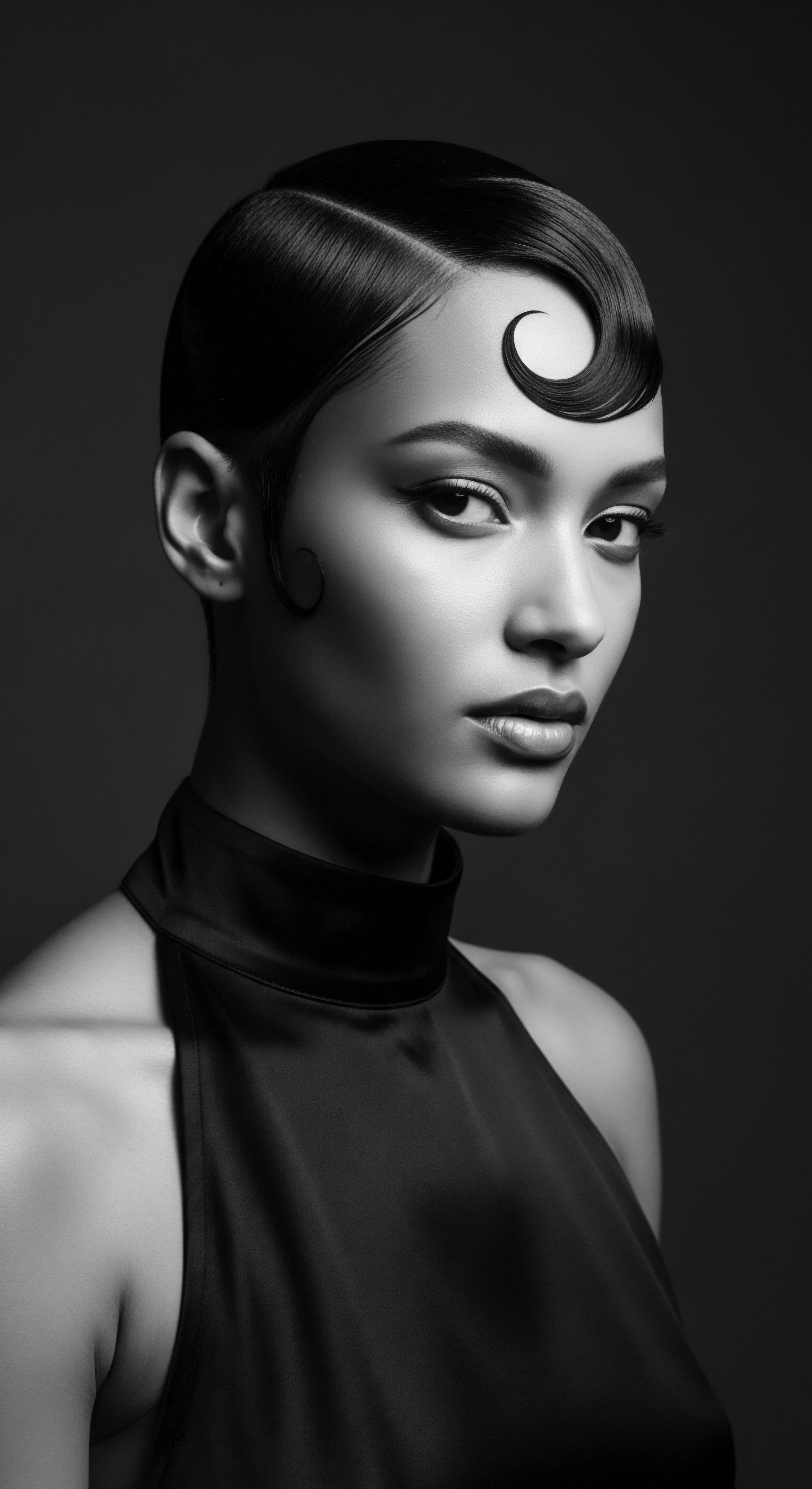
Protective Styling Ancestries
Many contemporary protective styles, valued for safeguarding textured hair from environmental stressors and manipulation, have deep ancestral roots. The practice of hair braiding , for instance, dates back thousands of years in Africa, with evidence found in rock paintings from 3500 BCE in the Sahara Desert. These intricate patterns were more than just adornment; they communicated complex social information—age, tribal affiliation, marital status, and even spiritual beliefs. Braiding sessions were communal gatherings, a time for sharing wisdom and strengthening bonds.
Botanicals played a silent, yet crucial, role in these practices. Oils from local plants were often worked into the hair and scalp before braiding to provide lubrication, moisture, and to promote health, allowing styles to last longer and protect the hair effectively.
Similarly, twisting and coiling techniques, precursors to modern twist-outs and coil sets, relied on natural emollients. These botanical agents provided slip for easier manipulation, enhanced curl definition, and sealed moisture into the strands. The continuity of these styling philosophies from antiquity to modern times speaks to their inherent efficacy and cultural resilience.
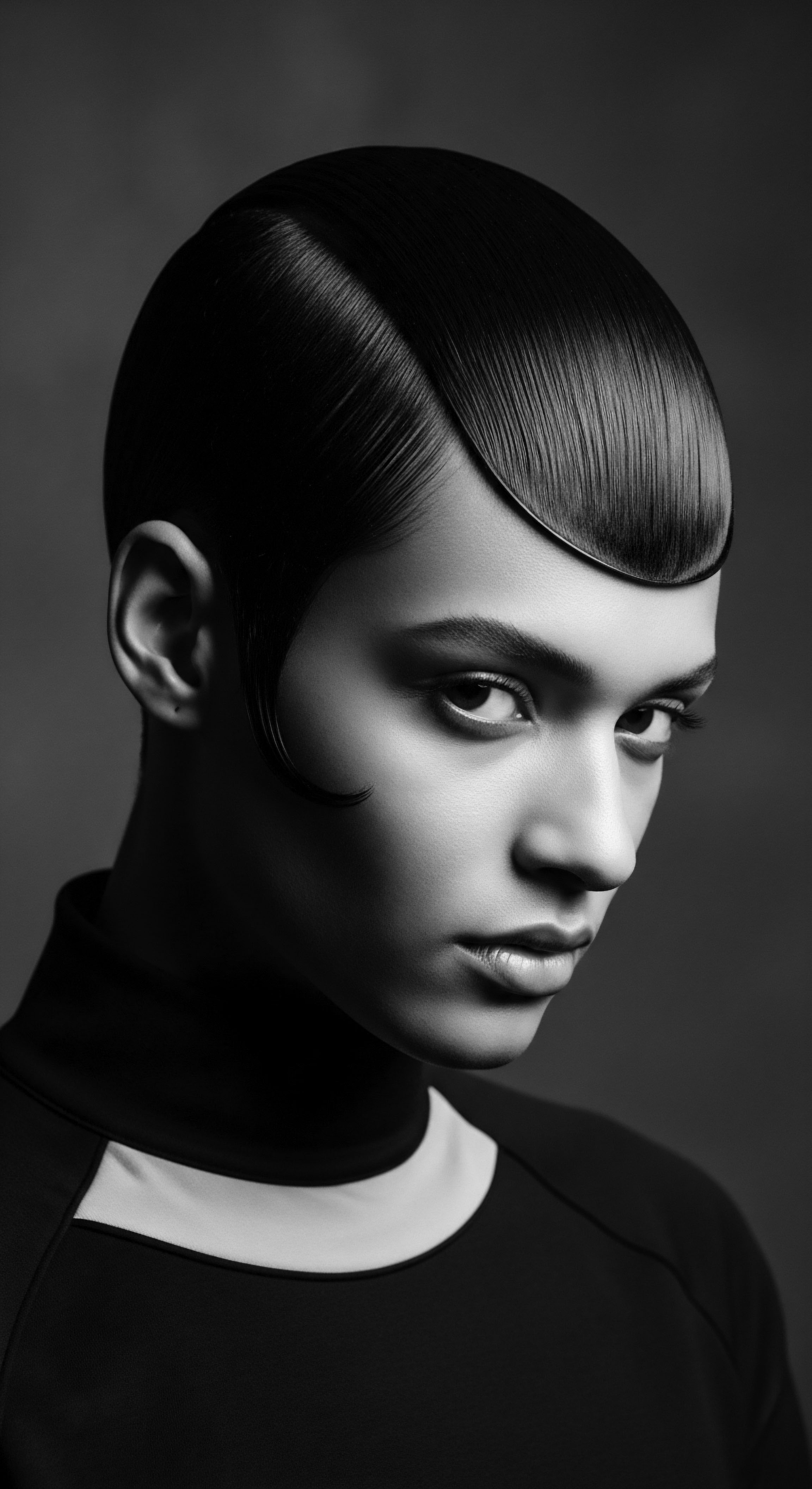
Traditional Natural Styling and Definition
The quest for defining and maintaining textured hair’s natural patterns is not a modern pursuit. Ancient communities cultivated methods that celebrated their hair’s distinct characteristics. They did not aim to alter its structure, but rather to enhance its inherent beauty. This meant utilizing plants that could provide hold without stiffness, shine without greasiness, and moisture without excessive weight.
- Henna (Lawsonia inermis) ❉ Beyond its well-documented use as a natural dye, imparting reddish-brown tones, henna also functions as a powerful conditioning agent. It coats the hair shaft, strengthening strands, improving texture, and balancing scalp pH. This dual action of coloring and conditioning has been valued for thousands of years across North Africa, the Middle East, and South Asia.
- Ayurvedic Herbs ❉ From ancient India, the Ayurvedic system of medicine champions a holistic approach to hair care, heavily relying on herbs like amla (Indian gooseberry), brahmi (Bacopa monnieri), and bhringraj (Eclipta prostrata). These botanicals, often prepared as oils or pastes, nourish the scalp, strengthen roots, promote growth, and reduce hair fall. They provide a historical blueprint for hair health that modern formulations are now revisiting.
The enduring influence of ancient traditions on textured hair styling speaks to a timeless wisdom in plant-based care.
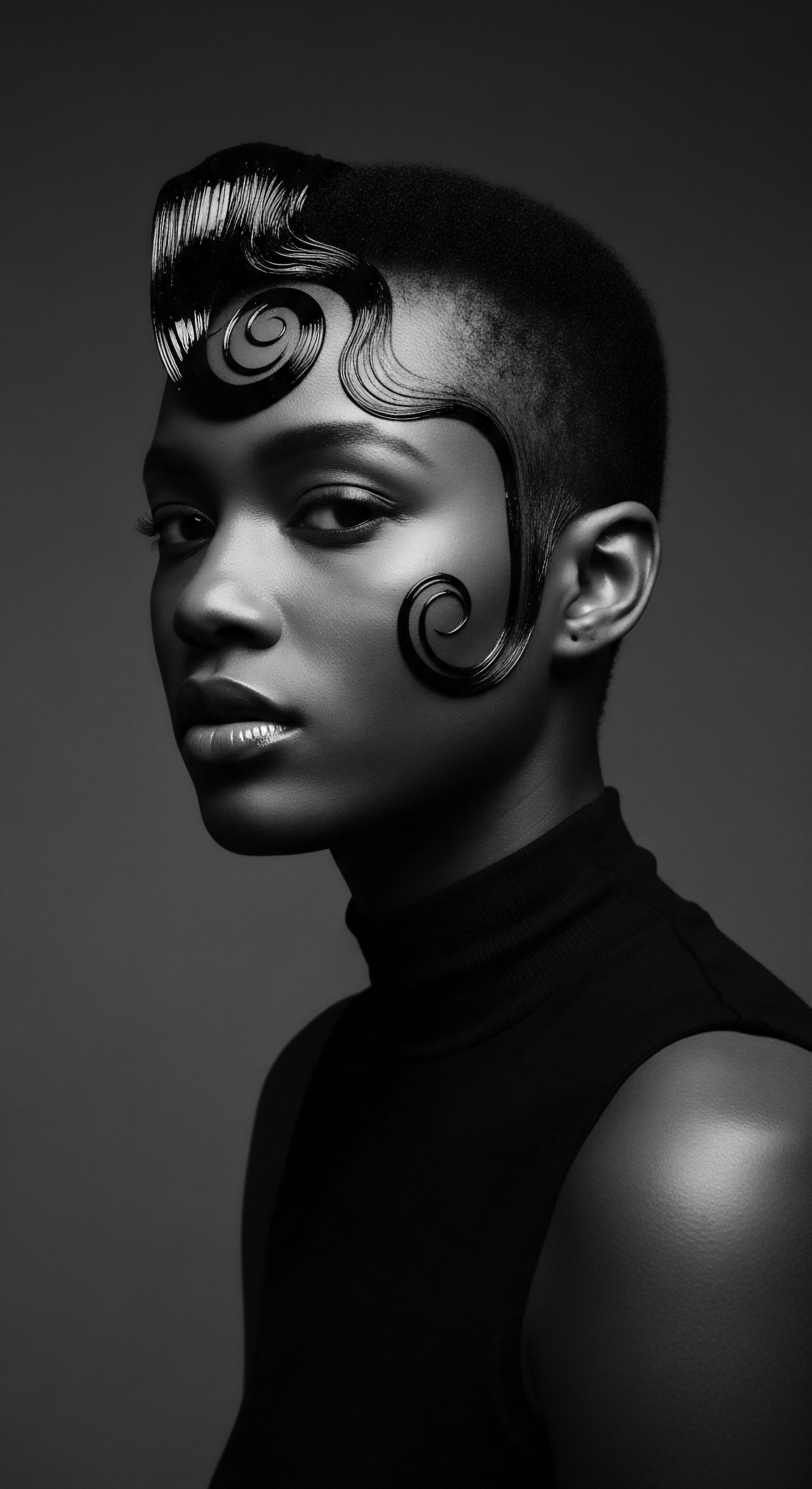
Wigs, Hair Extensions, and Cultural Meanings
The use of wigs and hair extensions, often perceived as contemporary trends, possesses a venerable history, particularly within ancient Egyptian society. Egyptians wore elaborate wigs and hairpieces made from human hair or plant fibers, often adorned with precious materials. These served purposes beyond aesthetics, including hygiene, protection from the sun, and as powerful markers of social status and religious beliefs. The maintenance of these extensions likely involved botanical treatments to keep them supple and clean, reflecting a comprehensive approach to hair adornment.
Consider how this historical context frames modern extension practices. While materials have changed, the fundamental desires—for length, volume, or a change in appearance—remain. Future innovation can draw inspiration from the meticulous care applied to these ancient hairpieces, perhaps developing more bio-compatible extensions or botanical-based bonding agents that also nourish the natural hair beneath.

Tools of the Ancestors
The tools of ancient hair care were simple, yet effective. Combs crafted from wood or bone, and sometimes adorned, were used to detangle and style. The hands themselves were the primary instruments for applying botanical remedies and forming intricate styles.
| Traditional Tool/Method Hand-pressing oils |
| Associated Botanical Knowledge/Practice Extracting and applying nutrient-rich oils like shea butter or marula oil directly to hair and scalp for moisture and protection. |
| Modern Parallel/Influence Pre-poo treatments, hot oil treatments, leave-in conditioners with natural emollients. |
| Traditional Tool/Method Wooden/Bone Combs |
| Associated Botanical Knowledge/Practice Used gently to detangle hair saturated with plant-based conditioners, minimizing breakage. |
| Modern Parallel/Influence Wide-tooth combs and detangling brushes designed for textured hair, often used with conditioning products. |
| Traditional Tool/Method Braiding & Twisting Fingers |
| Associated Botanical Knowledge/Practice Skill passed down through generations, often using plant extracts for slip and hold during styling. |
| Modern Parallel/Influence Modern protective styling techniques and styling creams designed to enhance curl definition and hold. |
| Traditional Tool/Method The ingenuity of ancestral tools and practices provides a rich heritage for contemporary hair care innovations. |

Relay
The understanding of textured hair’s heritage is not a static lesson from history. It is a living, breathing transmission, a relay race of wisdom passed from elder to youth, from ancient earth to modern laboratory. This section explores how ancient botanical knowledge informs holistic care and problem-solving, deeply rooted in ancestral wisdom, and how this enduring legacy can drive future hair care innovation. We consider the scientific validation of age-old remedies and the comprehensive approach to wellness that connects hair to the entire being.

Building Personalized Textured Hair Regimens from Ancient Wisdom
The concept of a personalized hair care regimen is hardly new. Ancestral communities tailored their practices to individual needs, environmental conditions, and available resources. This adaptability, grounded in an intimate knowledge of local botanicals, forms a powerful template for modern personalized care.
For instance, the varied formulations of African black soap , a traditional cleanser originating from West Africa, exemplify this adaptive wisdom. Crafted from plant ashes (such as cocoa pods and plantain leaves), palm kernel oil, coconut oil, and shea butter, its exact recipe often varies between tribes and regions. This soap has been used for centuries for its deep cleansing properties, effectively removing buildup from the scalp and hair while nourishing the follicles. Its traditional use for varied hair and scalp concerns underscores a customized approach to hair health.

The Nighttime Sanctuary ❉ Bonnet Wisdom and Its Origins
The seemingly simple hair bonnet , a staple in textured hair care routines today, carries a complex and poignant history, deeply tied to Black heritage. While head coverings have been used for centuries across various cultures for protection and status, the bonnet gained particular significance for Black women during periods of enslavement. During this oppressive era, Black women used headwraps and bonnets to protect their hair from harsh labor conditions and to maintain its fragile texture with limited resources. This practice became a crucial act of self-preservation and resilience.
In later centuries, the bonnet continued as an essential tool for protecting textured hair overnight, preserving styles, minimizing breakage, and retaining moisture. It became a symbol of care, a quiet rebellion against societal pressures to conform to European beauty standards. The scientific understanding of friction reduction and moisture preservation now validates what ancestors knew through necessity and ingenuity. Future innovations for sleep protection can draw from this deep cultural foundation, developing materials and designs that continue to honor this legacy of care.

Ingredient Deep Dives for Textured Hair Needs
The natural world offers a wealth of botanical ingredients perfectly suited to the unique properties of textured hair. Ancestors discovered these over millennia, and contemporary science now often confirms their benefits.
What specific botanical compounds found in ancient remedies benefit textured hair?
Many ancient ingredients are rich in compounds that address the specific needs of textured hair, such as hydration, protein, and anti-inflammatory properties for scalp health.
- Shea Butter ❉ This West African treasure, derived from the shea tree, is replete with oleic acid, linoleic acid, and vitamins A, E, and F. These components provide unparalleled moisture, act as a protective barrier, and aid in soothing irritated scalps. The richness of shea butter helps to seal moisture into textured strands, preventing dryness and breakage.
- Marula Oil ❉ Extracted from the kernels of the Marula tree, this oil is a powerhouse of antioxidants, vitamin C, vitamin E, and essential fatty acids. It is lightweight yet deeply nourishing, traditionally used to shield hair from sun and harsh climates. Its quick absorption means it delivers benefits without weighing down curls.
- Fenugreek (Trigonella foenum-graecum) ❉ Valued in ancient Egyptian and Ayurvedic practices, fenugreek seeds are high in proteins and nicotinic acid. This botanical promotes scalp circulation, strengthens hair, and helps reduce dandruff. Its presence in traditional hair masks aimed at growth and thickness speaks to its efficacy for scalp health, a foundational aspect of textured hair care.
Botanical ingredients, used for millennia, possess compounds scientifically validated for their benefits to textured hair.

Textured Hair Problem Solving with Ancestral Wisdom
Addressing common textured hair challenges, such as dryness, breakage, and scalp irritation, can be deeply informed by ancient solutions. For example, traditional herbal rinses, often infused with plants like rosemary and sage in medieval Europe, or various Ayurvedic herbs in India, provided cleansing and conditioning without harsh chemicals. These rinses promoted scalp health and added luster, offering a gentle alternative to modern, often stripping, shampoos.
The consistent use of plant-based oils for scalp massages, a practice central to Ayurvedic hair care, directly addresses dryness and promotes circulation to the follicles. This practice, known as “champi” in India, uses oils like coconut and almond oil to nourish the scalp, supporting healthy hair growth and reducing hair fall. This holistic approach to problem-solving, treating the root cause rather than just the symptom, is a powerful legacy from ancestral wisdom.
Can modern scientific analysis elevate traditional hair remedies?
Yes, contemporary research provides deeper insights into the chemical compounds responsible for the benefits observed in ancient botanical practices, leading to more targeted and effective formulations for textured hair.
The future of hair care innovation for textured hair is not a departure from the past; it is a profound revisiting. It involves understanding the intricate chemistry of botanical compounds, informed by the thousands of years of observational data gathered by ancestors. This relay of knowledge, from ancient gardens to modern labs, promises solutions that are both efficacious and deeply respectful of heritage.

Reflection
To stand here, at the cusp of hair care’s unfolding future, is to feel the presence of all who came before. Our textured hair, with its unique story etched in every coil and wave, stands as a testament to the enduring spirit of communities across the diaspora. The question of whether ancient botanical knowledge can inform tomorrow’s innovations finds its answer not in a simple ‘yes,’ but in a resounding affirmation that acknowledges a profound, continuous exchange. The botanical wisdom of ancestors, cultivated over millennia, offers not just ingredients, but a philosophy of care—a reverence for nature, a commitment to holistic wellbeing, and a profound connection to identity.
The knowledge held within indigenous practices is more than a list of plants; it is a living, breathing archive of human ingenuity, resilience, and beauty. It reminds us that true innovation often means looking backward to discover pathways forward, that the earth holds remedies we have perhaps forgotten but never truly lost. As we explore new technologies and scientific understandings, may we always remember the hands that first crushed a berry, blended an oil, or braided a pattern, understanding that every strand carries the soul of a heritage.

References
- Humphrey-Newell, Diane M. “Henna ❉ Uses of It in the Middle East and North Africa.” CSDT.
- New Directions Aromatics. “Marula Oil – The Elixir of Youth – Uses & Benefits For Skin & Hair.” 2018.
- Corvus Beauty. “Ancient Herbal Wisdom for Hair Care Rituals of Today.” 2024.
- Karethic. “The Benefits of Organic Shea Butter for Hair.” 2018.
- O&3. “Embracing the Rise of Marula Oil ❉ Market to Reach $31.2M by 2027.” 2024.
- Hachette Book Group. “Four Pure Herbal Colorants for Coloring Hair Naturally.”
- Odele Beauty. “A History Lesson On Hair Braiding.” 2024.
- The Love of People. “9 Benefits Of African Black Soap For Hair.” 2023.
- Shea.254. “250g Solid Raw African Black Soap.”
- MDPI. “History of Natural Ingredients in Cosmetics.”
- BA Notes. “The Diversity of Hair Characteristics Across Human Populations.” 2023.
- AyurVita. “Ayurvedic Hair Care ❉ A Comprehensive Approach to Healthy Hair.” 2024.
- Forest Essentials. “Ayurvedic Hair Care Products.”
- The Earth Collective. “Indian Hair Care Regimens ❉ Timeless Wisdom for Modern Hair.” 2023.
- Private Label Extensions. “The Cultural Significance and History of Braiding Hair.” 2024.
